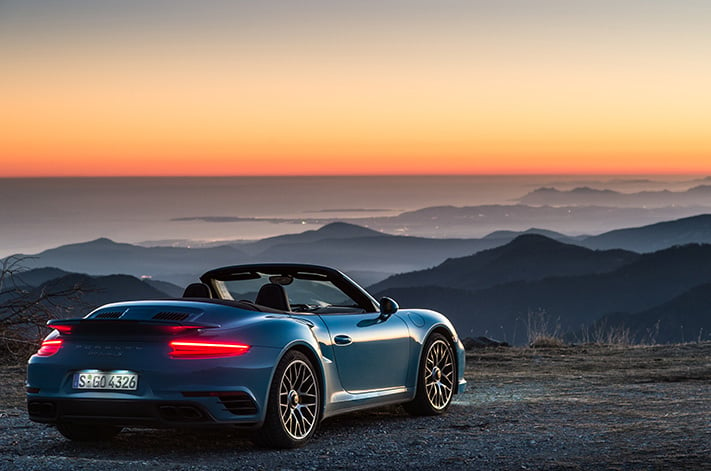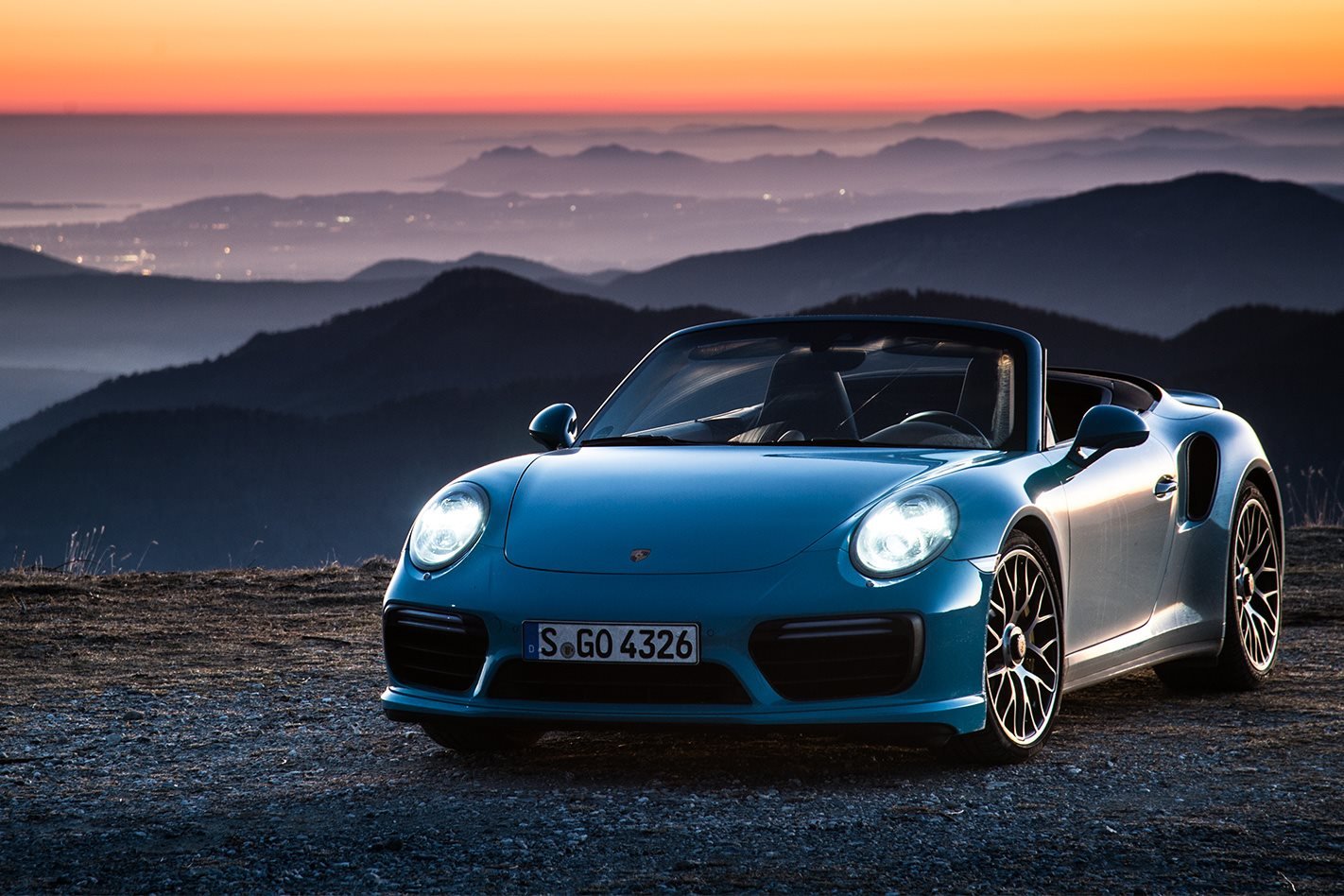I’m leaving one of the world’s great motor racing circuits behind and heading somewhere better to drive.
First published in the April 2017 issue of Wheels Magazine, Australia’s most experienced and most trusted car magazine since 1953.
Downtown Monaco early on a winter weekday morning isn’t as much fun as the Grand Prix circuit it becomes for one weekend every summer.
Its corners keep their deep red-and-white apexes year-round, but today they’re cut across by pushy, surly van drivers with delivery schedules to keep, swarmed over by mopeds with chic riders and gingerly ventured onto by elderly Monegasque ladies with tiny dogs on leashes and baguettes under their arms, trying to find a safe way home from the boulangerie through this madness.
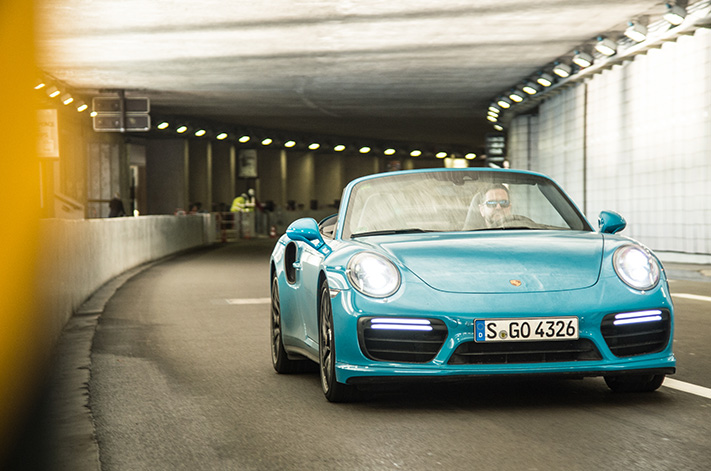
If you happen to be passing in a decent car, you’re obliged to drive a couple of laps of the circuit and briefly imagine yourself as Fangio or Senna before a hoot and a curse from one of those van drivers – or a traffic jam – brings you back to reality.
But the Grand Prix isn’t Monaco’s only major motorsport event. Since 1911 it has organised the Monte Carlo Rally, held not in the tiny principality, of course, but on the extraordinary roads of the French Alpes-Maritimes which rear up over its port.
Like the Grand Prix circuit, they’re freely available all year round because, unlike many of the other famous Alpine driving routes, they’re not high enough to be lost under snow from November to May.
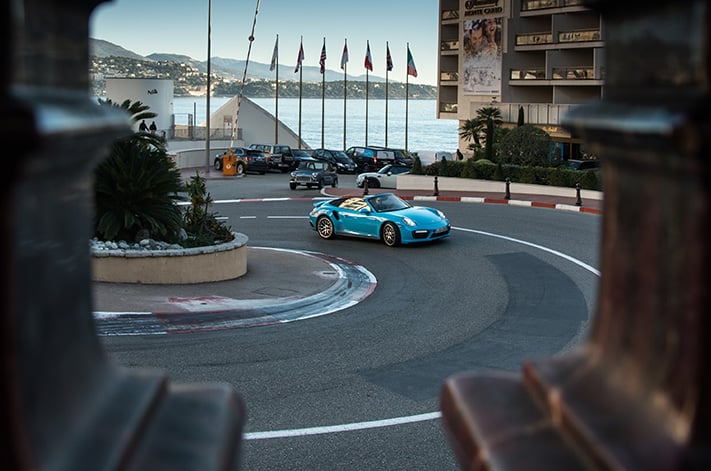
We have the right car. In 1965, the Porsche 911 made its motorsport debut in a snowy Monte Carlo Rally, and in 1968 it took its first rally victory here in the hands of heroic, lantern-jawed British driver Vic Elford.
The 911’s storied motorsport career since gives it a credibility that partly explains its extraordinary longevity. And it all started here.
But the 911 I’m taking back to the Col de Turini has performance that might have scared even Quick Vic. With 427kW, it produces four times as much power as those early competition cars.

The 3.8-litre flat-six’s ports and fuel pressures have been revised, and its twin variable-vane turbochargers are now even bigger.
Porsche, with its usual modesty, claims that the Turbo S will hit 100km/h in 3.0 seconds. Privately, the engineers admit it’s less, and one American car magazine has independently proven that the tin-top Turbo S accelerates to 60mph (96km/h) in just 2.5 seconds. That’s 0.3 seconds faster than a Veyron.
This is one of the craziest road cars Porsche has ever made, and it gives this road trip a double purpose. I want to explore the route of the Monte. But I also want to measure how far the 911 has progressed since those early, lithe, light 911s, and see if you can still sense the link despite its stupendous power output.
This road trip actually started at Porsche HQ in Stuttgart, not Monaco, and the long drive to the Mediterranean revealed much about the car’s character.
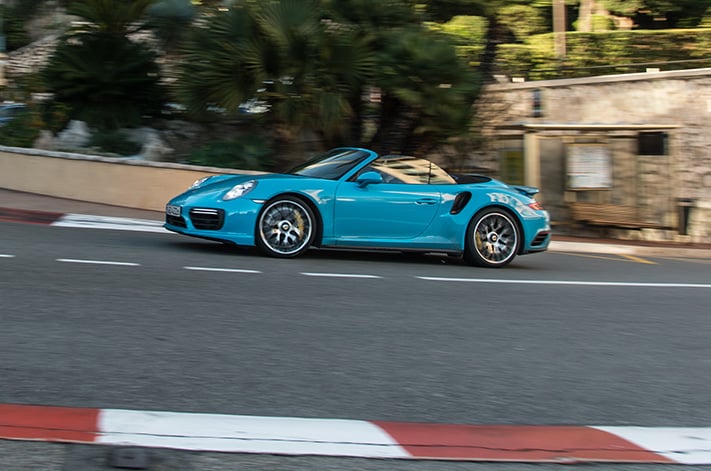
The softer rubber means the top speed has to be limited to ‘just’ 240km/h on the autobahns: a small price to pay for guaranteed forward progress now, and later on the Col de Turini.
The Turbo S just eats up the 800km trip. Despite its power it’s refined and comfortable and simple to drive.
It’s easy to forget how special it is. A Lamborghini and most Ferraris would hate a long trip like this. The Porsche’s cabin doesn’t have the design exuberance of its (more expensive) Italian rivals, but it offers build quality to survive a nuclear attack and endless gadgets, including real-time data on g-force, power output and torque split between the axles.
As enthusiasts we might prefer the stiffness of a coupe, but even at high speeds and in sub-zero temperatures the fabric roof is so thick and fits so well that it might as well be steel. A little extra noise disrupting some of the finer detail of the audio system seems the only downside. And there is something pleasing about driving the very top of the road-going 911 tree, with its $477,700 price tag, even if most of us would prefer the new GT3.
The sat-nav guided me unerringly on a trip that passed through four countries (five if you count Monaco), leaving me to concentrate on the view out.
Driving south, the low winter sun bleaches the autobahn ahead bright-white, and with the frosted landscapes on either side it’s like driving into the beam of light that the Starship Enterprise creates when Captain Kirk engages warp speed.
Even when limited to 240km/h, it’s not much slower either. Soon the high Alps rise up directly in our path: the route cuts under them through Switzerland’s Gottard Pass. Once into Italy, the temperature rises as the altitude and the distance-to-destination on the sat-nav drop. After just seven and a half hours I arrive in Monaco in 15-degree evening warmth.
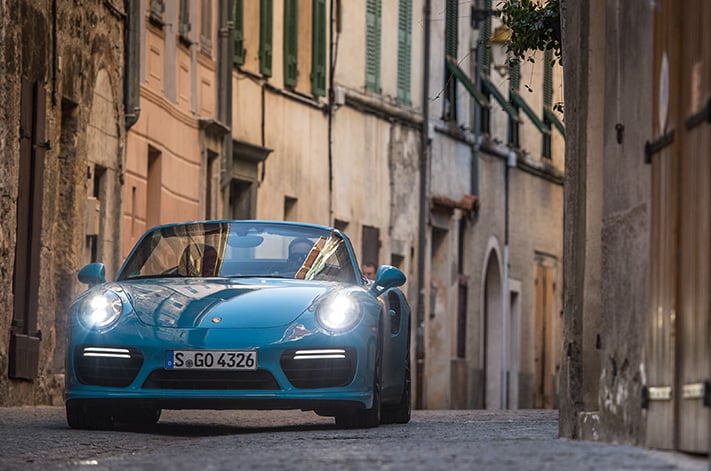
The road is instantly recognisable to motorsport fans: a series of hairpins clinging to the steep valley walls, often with square-cut rockface on one side and, on the other, the square root of nothing at all for thousands of feet.
This is high-consequence motoring. Get it wrong in one direction – even by an inch – and you’re guaranteed a very expensive bodyshop bill. Run wide in the other and you might never be found.
In truth it’s not much fun: the 911 has clearly grown over the years and ours is the wide-bodied Turbo. It’s still infinitely wieldier than a Ferrari or Lamborghini up here – more compact and with better visibility – but I’m still picking my way between corners, and barely prodding the throttle.
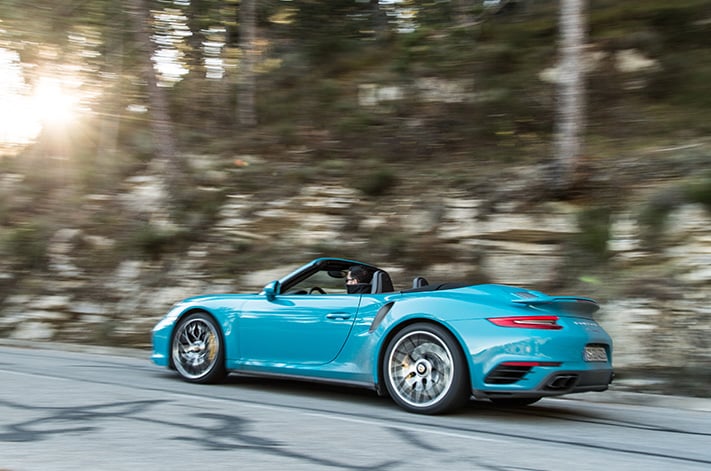
The road ahead is blocked, she explains, and we’ll have to turn around. I ask if the blockage can be cleared. Not today, she laughs. An articulated logging truck has jackknifed across the road, the driver perhaps caught out by the gradient, or the sharpness of a turn, or a patch of ice.
The trailer is wedged between the rock face and one of the low stone walls that line some corners. Others have flimsy metal barriers, or nothing at all. The driver stands by his cab, hands around his head, giving silent thanks that he hit the one thing able to stop him going over the edge. If the constant signs warning you of ice and rockfalls don’t temper your speed on these roads, the sight of someone else’s near-death experience will.
We head back down to Sospel, one of the ancient, pretty stone villages built into the steep valley walls, and from there scale the Col de Turini by another route. At the top we’re level with snow-capped peaks further inland and there’s permanent ice on some stretches, so I keep the speed low as we descend again, heading west to loop over some of the other mountain roads used in the Monte.
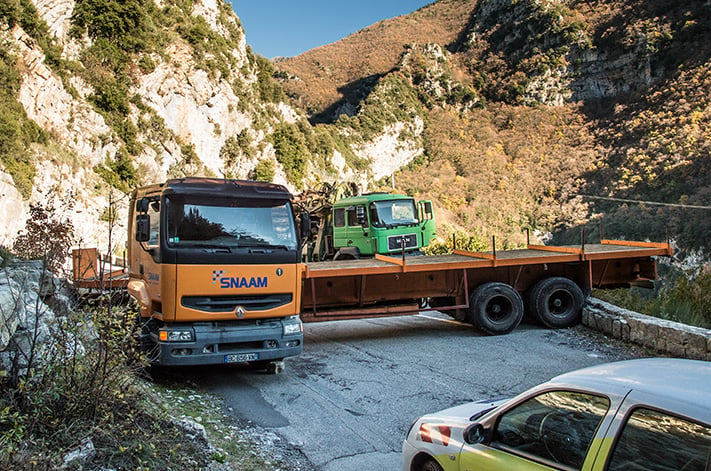
The Col de Vence is another largely deserted mountain road, but it’s faster and more open than the Turini, with longer, flowing stretches where I could finally start to extend the Turbo S.
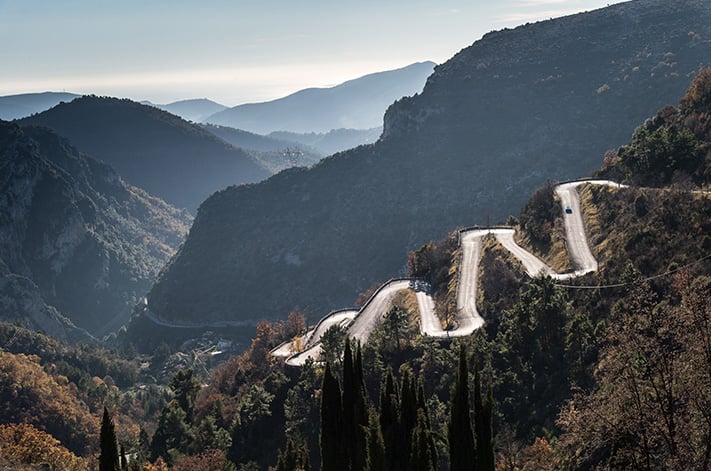
You exit a hairpin at 50km/h in the Turbo S and arrive at the next at whatever speed you choose, knowing that the impassive standard ceramic-composite brakes will turn the speed down instantly and precisely.
But even up here, with views all the way down the mountainside to the Mediterranean, your social conscience and your limits as a driver mean you seldom use the full travel of that accelerator.
Even from a standing start, a mountain simply doesn’t have the space to let you hold the gas wide open for more than five seconds, by which time you’ll be approaching 160km/h with a corner looming.
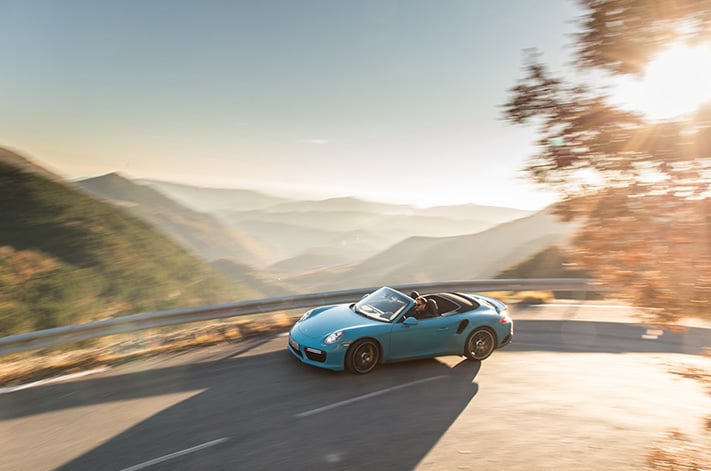
Performance upgrades roll out for Porsche 911 S
Maybe it’s a little slower on snow tyres: you can feel the all-wheel-drive system working hard to keep traction. And maybe it’s a little slower for being a cabrio: it’s 70kg heavier, and under extreme provocation you can feel the body flexing very slightly across the scuttle. But I still can’t imagine wanting or needing or being able to use a car any quicker than this on the public road.
Is it too quick? Maybe. The Turbo S suffers from a more severe case of the problem that afflicts many of its rivals that have recently switched to turbocharging. There’s no longer good reason to run them out to the redline. It would be both an indulgence and slower, and even if you do it they just don’t sound as good at max revs.
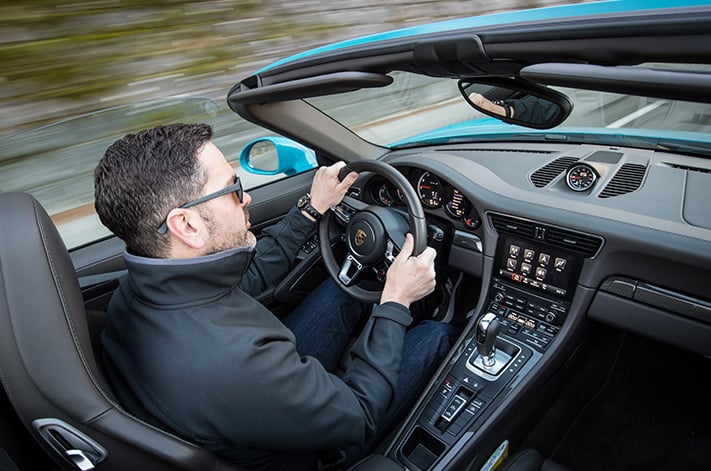
For a 427kW engine, the exhaust note is muted; there’s a good turbocharged rip when pressured, and pleasing pops and burbles when you back off, but nothing like the drama of the atmo cars of old.
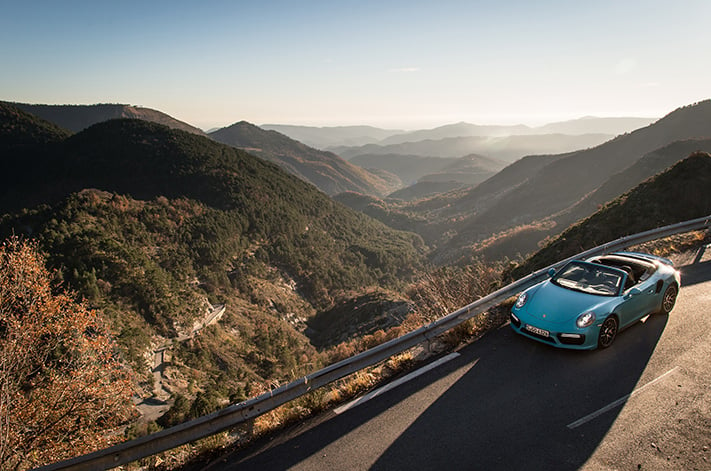
But saying it drives like a McLaren is both a compliment and a criticism. It’s an engineering marvel, but feels a little distant. To answer my initial question: yes, some of the character and iconoclasm that once defined the 911 has been lost, sacrificed to abilities whose limits you’ll never find.
